Roadsters
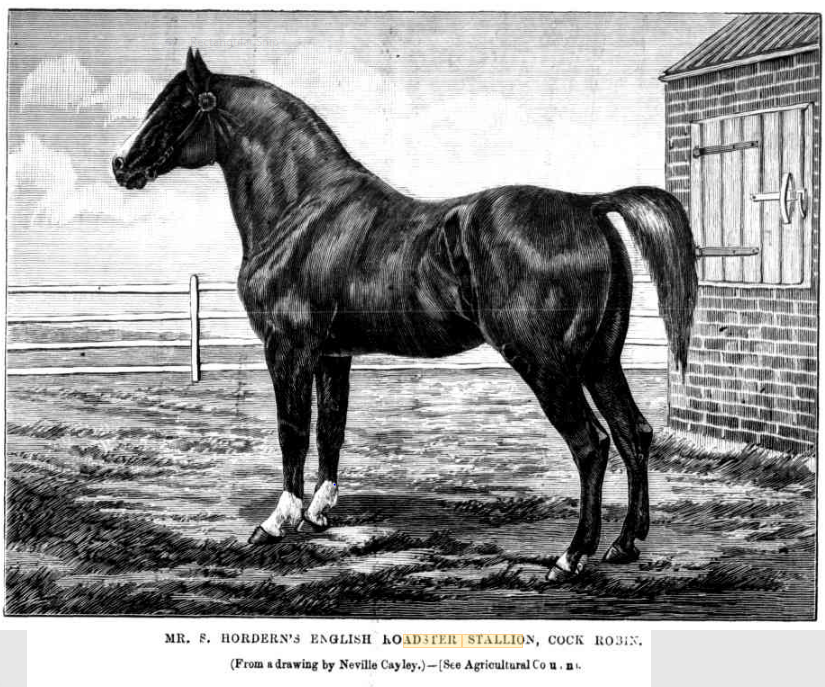
© Janet Lane, 2017. Image from The Sydney Mail and N.S.W. Advertiser. 28th September, 1889.
The Roadster was a handsome, active, robust horse with excellent action. Roadsters are an important ancestor of the Waler. They were immensely popular in the nineteenth century, when road surfaces and carriage design had undergone radical improvements.
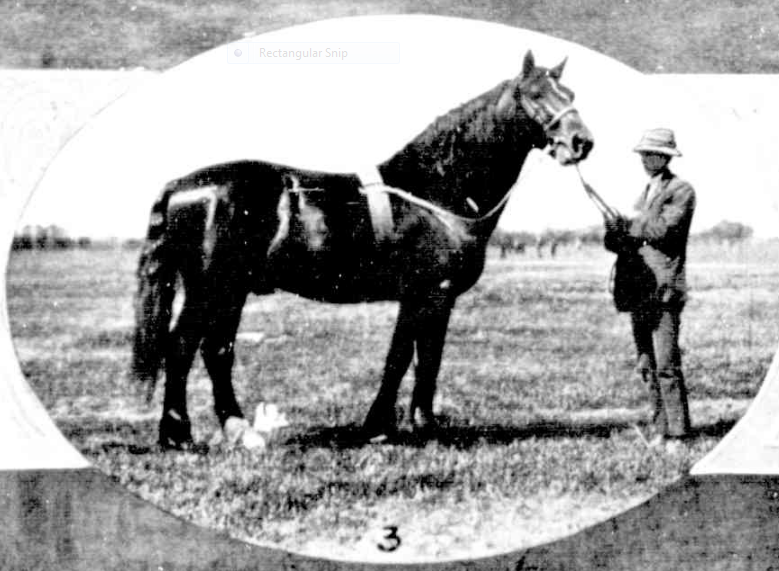
It was the height of fashion to have a good roadster to drive – better a pair – for the dedicated it was a four-in-hand team; some had teams of six. It was an important part of a being gentleman to be a skilful whip (driver.) As coach horses were bred to be strong and active, so were Roadsters.
There was a revolution in horse breeding in the nineteenth century. Fabulous breeds were being crossed and created – all utility horses.
The Roadster had to be good looking, with excellent action, as well as useful. Road racing was immensely popular among young bloods – over immense distances. A man was judged by his horse, it had to be the best.
Roadsters developed from the harness horses of farmers used to take goods to market. Lincolnshire Blacks, Norfolk Trotters (later called Norfolk Roadsters) and Yorkshire Trotters (Roadsters) were three types of early Roadster. They were strong, the Lincolnshire Blacks not high – about 14.2 hands – and needed to get along at a good rate with a big load, uphill and down dale. Roads were bad and strength was needed to haul through mud, ruts, potholes, dust. A worker that was essentially a road horse of unflappable temperament and incredible bone. They in turn, had the blood of the chariot ponies of old Briton in their veins – Boadicea was a chariot driver par excellence. The chariot ponies had upright necks. There was a good dash of The Black Horse of England (a heavy draught-like knight’s and farmer’s horse.) All these breeds, like the Roadster itself, are now extinct.
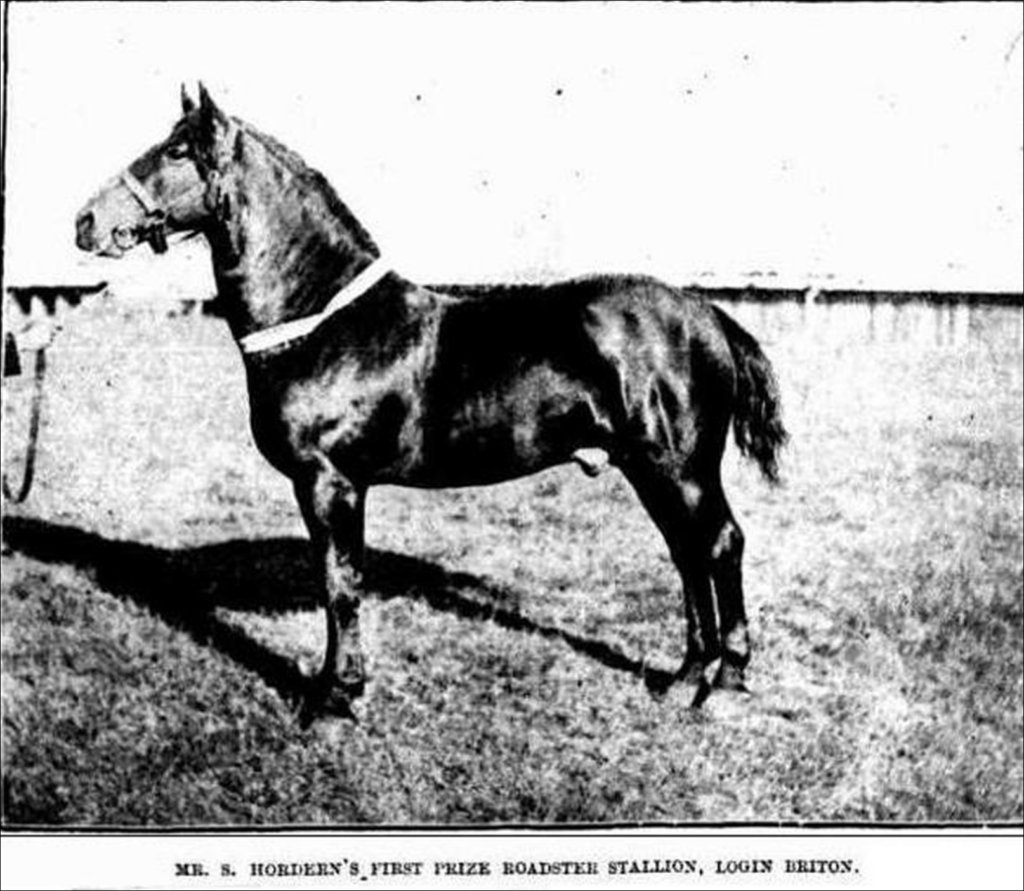
When ‘blood’ horses became fashionable in Charles II’s time, it was discovered that crossing these lean light Eastern horses with the heavier farmers horses made an ideal roadster – ridden or driven it was strong with endless stamina and the iron feet and legs and steady character of its farming progenitor. The Norfolks in particular developed into a fast handy road horses for travellers and young bucks. The Roadster came into being, and was the foundation of the Thoroughbred. Yes, the’ founding’ three stallions were eastern, but the mares? And there were many more stallions than three. Great Roadsters like Wroot’s Pretender is rightly claimed as an ancestor of the Thoroughbred and the Hackney. The famous Shales lines were all Roadsters entered into the TB studbook, the Bay Bolton’s had a touch of eastern blood in primarily Roadster blood. Fireaway and the mighty Bellfounder lines were Roadster.
The Norfolk Phenomenon line of Roadsters is famous; he went to the continent and influenced many breeds from Russia to Poland to Hungary to Prussia, as did the Roadster Stuart. The Orlov Trotter of Russia, a beautiful breed, owes a lot to the Roadster. So does the Furioso of Hungary. The Welsh Cob owes its stocky build and good neck/head carriage to the Roadster. The Tori horse of Estonia benefitted from the Roadster. The Gelderland of Holland. The Oldenburg. They went to Sweden.
Countless Roadsters of all the great lines came to Australia. A good Roadster took your breath away with its upstanding impression of beauty and power. They were bred to be taller than their little nuggety farm cart ancestors, and faster. The Lincolnshire Blacks, still a farmer’s horse however, did take delight in racing Roadsters when met on the road – and pulling a heavy load, often held their own!
They were bred with Thoroughbreds, ponies, draughts, to get India horses. All the great India traders who also bred horses, used Roadster stallions and mares and showed them successfully. Sir William Clarke imported many. His son Sir Rupert had several for breeding for India, the artillery, hunters, hacks and driving horses. Lots of people imported them, and bred them. Too many to list.
It was not uncommon to find Roadsters registered as Thoroughbreds here, as they were in England. The Australian Stud Book used to list carriage class wins at shows these horses had to their credit – not race wins, as they were not raced except in Corinthian races – those for gentlemen, not considered as common racing, and rarely on Thoroughbreds. Roadsters often won the big show classes for horses best for getting Remounts. They also made top hunters.
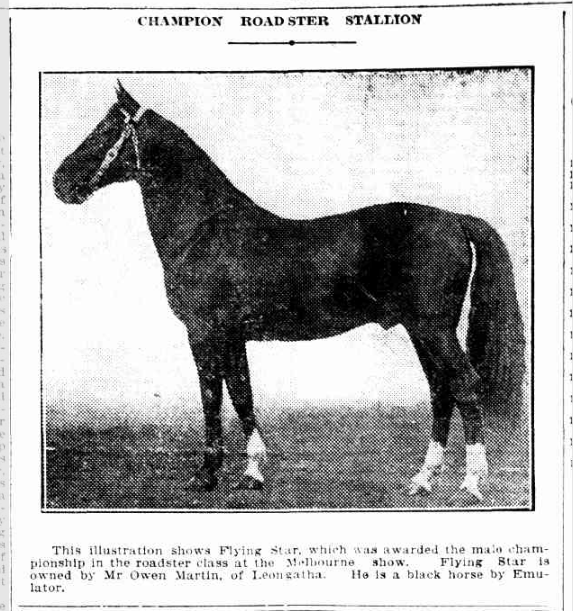
In the 1880’s the term “Hackney” was chosen as a breed name for Roadsters and a society formed. It was the beginning of the end of the old Roadster. More stylish, high stepping horses – used in cities – were bred over the next decades. It was forbidden to canter or gallop horses in towns and cities but one could get about at a trot – hence Roadsters had become immensely fast at the trot. But many wanted style, not speed – the high stepping Hackney which “went up and down in one place” was a safe conveyance in the city, but too slow for a big place like Australia.
The Hackney came here but didn’t take over from the popular Roadster until the era of the horse was past – when people were buying for looks, not utility. They were derided as “naildrivers” here for their up and down on the same spot action. By the 1890’s some harness horses were referred to as Hackney-Roadsters. Hackneys were of course, simply Roadsters selected for higher action and finer looks, whilst being a strong horse themselves. As a studbook was formed they gained protection.
Roadsters/Hackneys were selected for the trotting gait, they weren’t required to be comfortable for riding but to look good in harness. Pacing had been the main gait for centuries as bad roads meant riding was the 4 preferred transport method and pacing (also called ambling etc) was more comfortable. Improved roads led to improved vehicles which led to trotters. Trotting races on racetracks were becoming fashionable. In America the Prohibition banned racing, so people took to road-racing their trotters unofficially – once racing was legal again, they moved onto racetracks and formed the Standardbred. It had many Roadsters and Hackneys in its blood, and of course the Thoroughbred.
Roadsters were popular in Australia until the 1920’s. After that they disappeared. This is what happens when no studbooks are formed. The invention of the motor saw many breeds disappear before people realised it was too late. The term ‘trotters’ rarely applied to Roadsters, and were shown in different classes at shows. Usually these were Standardbreds of American extraction, or Thoroughbreds that were good trotters (a surprising amount). Harness horses were sometimes called trotters as a collective noun by some. Although it later came to mean harness racing horses, in those times the Standardbred too was evolving (and had natural pacing lines) and was a good natured tough horse with iron legs and hooves from its roadster ancestors. Some top American lines came here and a few went to stations for India breeding. All these horses – trotters, pacers, roadsters, hackneys, standardbreds – had iron legs and feet. This made them popular with military breeders. By the early twentieth century, roadster increasing became a term for Hackneys and Standardbreds as the old style of road horse disappeared in favour of show horses and race horses. The term Hackney cobs was also used for the old fashioned Roadster in those times.
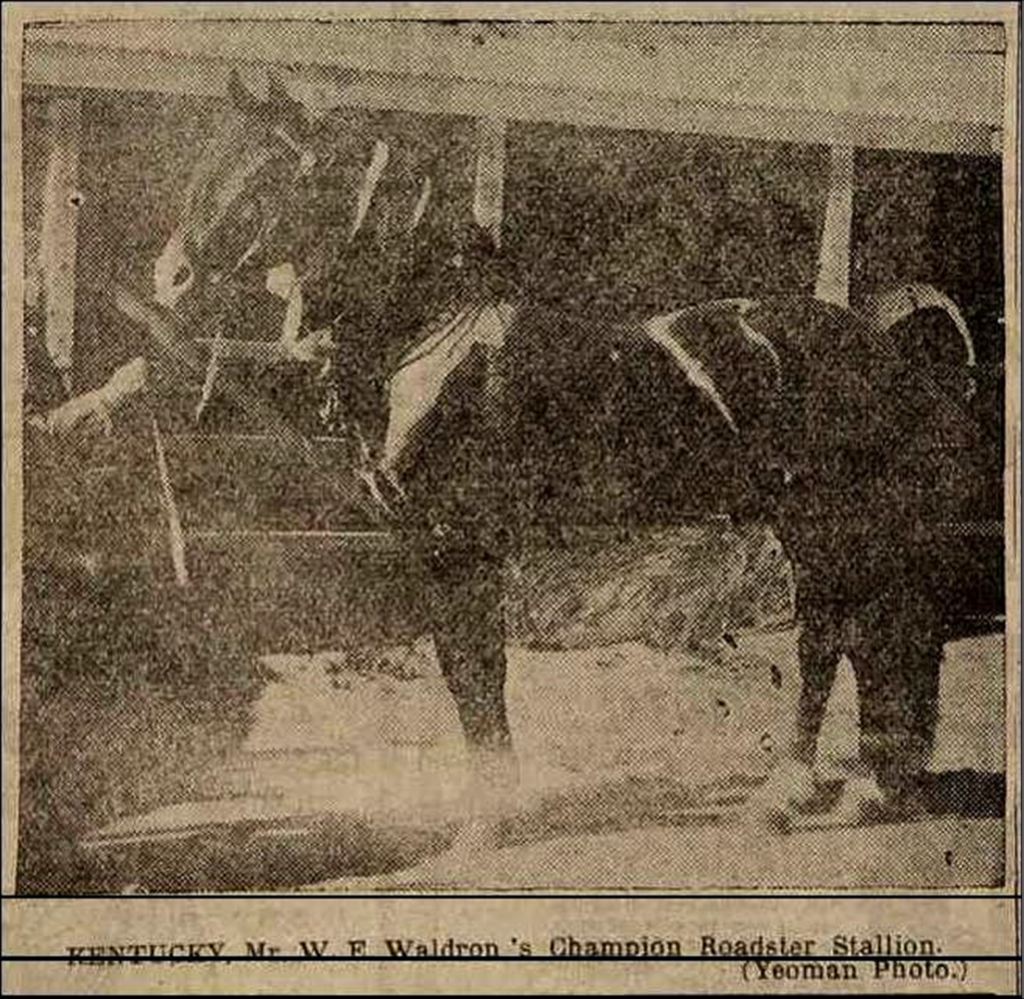
These days Hackney numbers are dropping and conservation genetics are being used, in a losing battle, to try and keep the Hackney lines of old, a cobby type which were the Roadster genes. One can see in a good Hackney its Roadster ancestry. Roadster lines were absorbed into newer breeds – Hackney, Thoroughbred, Standardbred, Morgan and Waler. There is a creditable theory Justin Morgan was Arab x Roadster.
Many Waler breeders for India such as Sir Rupert Clarke, Alf Glasscock, Charlie Gidney, countless others, showed Roadster stallions used to get India horses. One of Rupert’s named Bounding Willow was so magnificent – with such speed and style – that crowds rushed to the rails at Melbourne Royal every time it was trotted around. Like angels, their feet never seemed to touch the ground. Roadsters were used to breed coach horses here as their feet, legs and wind was legendary. Roadster stallions went to stations for breeding India horses.
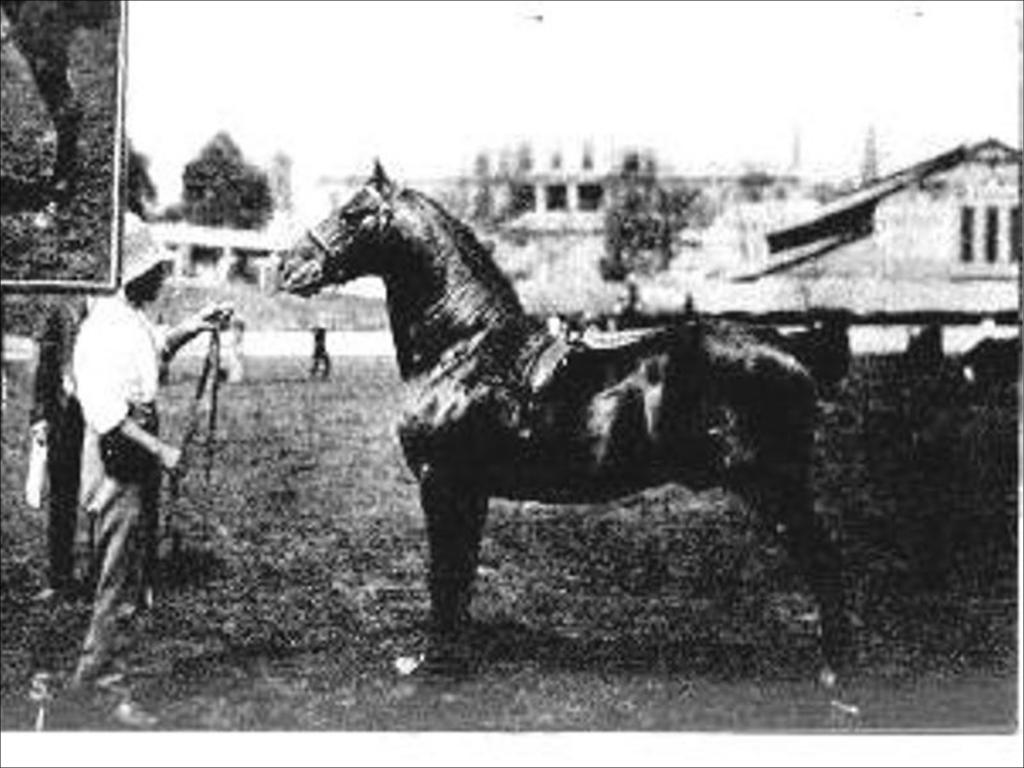
Roadsters that came here were good big horses, usually about 16 hands. Fireworks, son of imported Fireaway was advertised at stud near Portland, Vic, in 1877 and stood 16 and half hands, this was the usual height. Foaled 1873 he went back to Shales and Norfolk cobs, an extensive and lengthy pedigree. The Roadster Confidence among others stood in the Maitland area 1870’s-80’s where many India horses were bred. Many advertised at stud and as travelling stallions throughout Australia.
Roadsters to the Northern Territory…
Roadsters were among the horses taken to Undoolya by Ned Bagot in 1873, then by Tennant and Love about 1880. The incredible Alfred Giles included Roadster blood in the horses he took there – the first in most areas of the NT.
Mr. Porter imported the dark bay Roadster named King Frederick The Great in 1901 and put onto his station Glenbrook at Victor Harbour, South Australia. Countless South Australian Roadsters were in bloodlines taken to the territory.
1902 the Roadster Sandwing was bought for his Victoria River station by Mr. Bradshaw. Sandwing was of Thomas Elder’s breeding and Bradshaw bought him to get India horses.
In 1903 Osmond and Panton imported a ‘powerful black Roadster stallion’ on the steamer Tsinan, from England, and put him on Elsey station, N.T. to breed India horses. Osmond had bought Elsey from Dr. Browne, and Giles’ good horses ran there.
Horse breeder Tom Pearce of Willeroo, near Katherine, N.T. bought a Roadster stallion in 1905 in Adelaide. His name was Young Woldsman, by Woldsman, a Roadster imported from England. Young Woldsman was bred in South Australia. Tom bred for the India trade, and his horses were highly sought after as stockhorses.
1914 on the steamer Van Waerwyck a ‘magnificent Roadster stallion’ arrived in Darwin with another stallion for J. Bradshaw, for his station on the Fitzmaurice River. The Roadster’s name was Cordutor, he stood 16.2 hh and was by the famous Dan Patch, an American sire, which had been extensively written up here.
Probably more just adding these as sighted. Roadsters owned by India traders who also bred for the trade, in all states, too numerous to list.
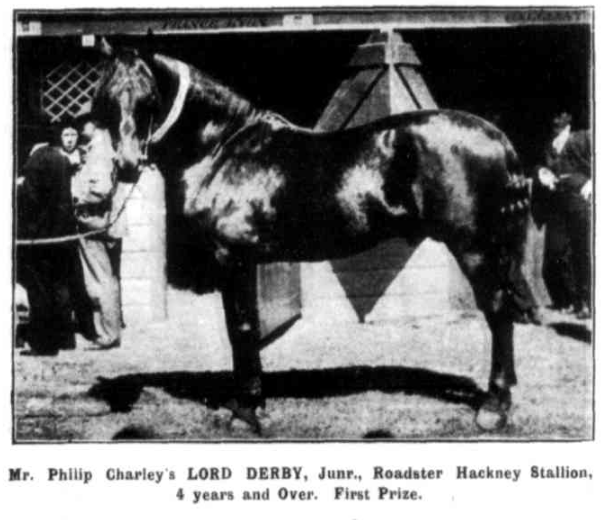
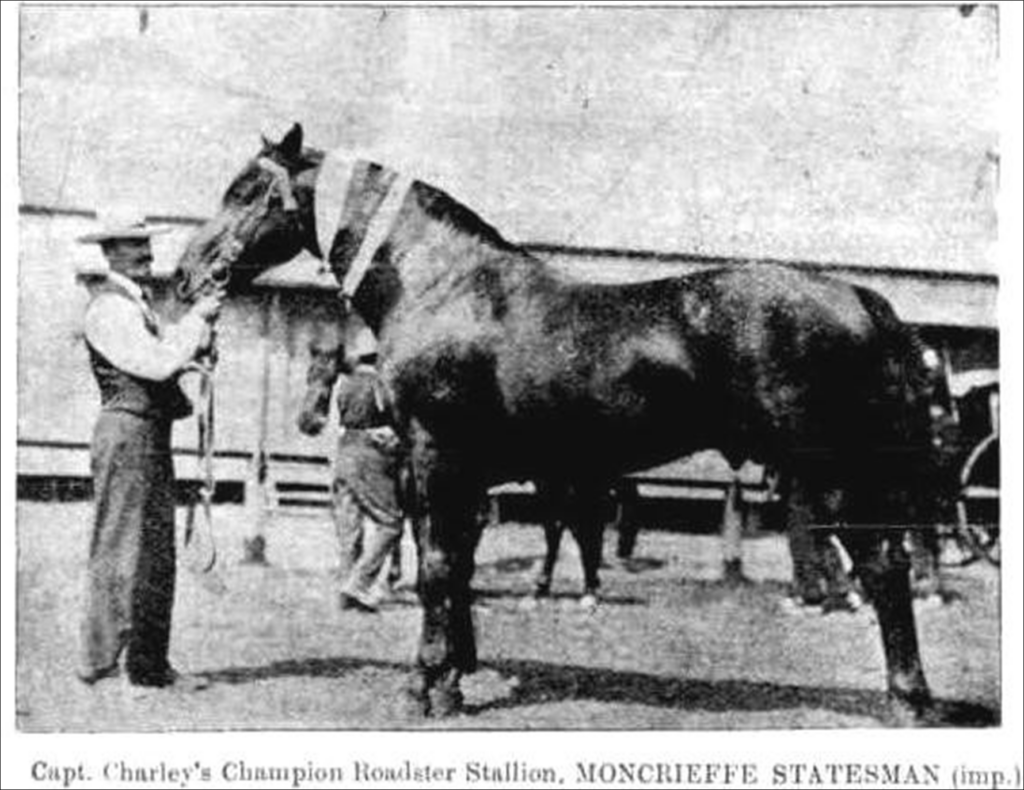
We were lucky Walers were developed when horse breeds were at their height of perfection. From the Roadster the Waler gained its upright neck carriage perfect for the cavalry horse, its good safe action (a Roadster had high action so it would not trip at speed over rough ground), stamina, excellent hooves and legs, strong shoulders, tremendous bone and good temperament. Bearing in mind the Thoroughbred was created from Roadsters too, another source of Roadster genes. The Thoroughbred was the main ancestor of the Waler, and it’s wise to remember what a complicated set of genes this ‘breed’ was – and which breeds were in its genesis.
Ephemera : Early sporting motor vehicles were called Roadsters after these horses.
The Tori Horse http://www.torihorse.com.au/tori-history/
The term Roadster now means a type of harness class in America.